Phung-Tien Phan*
STOP DREAMING
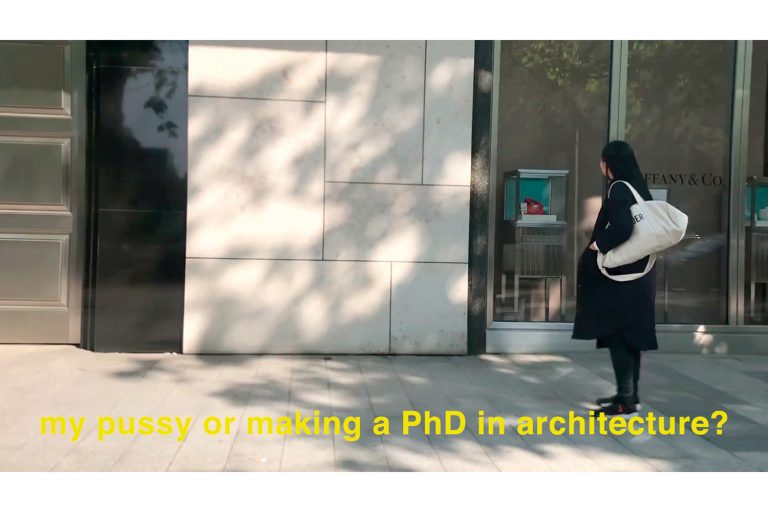
Phung-Tien Phan, Girl at Heart (still), 2020. Courtesy: the artist and Drei, Cologne
On the one hand, I’m interested in how social media works, at what speed things happen in parallel and grant access, and on the other hand I’m interested in tradition and societal norms, which are still only changing very slowly.
Phung-Tien Phan
In her first solo exhibition STOP DREAMING at Schiefe Zähne, Phung-Tien Phan shows a large-scale wall work as well as a group of sculptures that fill much of the exhibition space. Tables of various shapes and styles are borrowed from their original use as dining or office tables and transformed into work tables through various interventions. The attachment of circular saws or drill stands, for example, gives rise to hybrid forms that, as a symbiosis of tool and finished product, seem to make reference to the manufacturing process. In view of the industrial production of the tables, however, this reading runs into the void of a nostalgically tinted illusion.
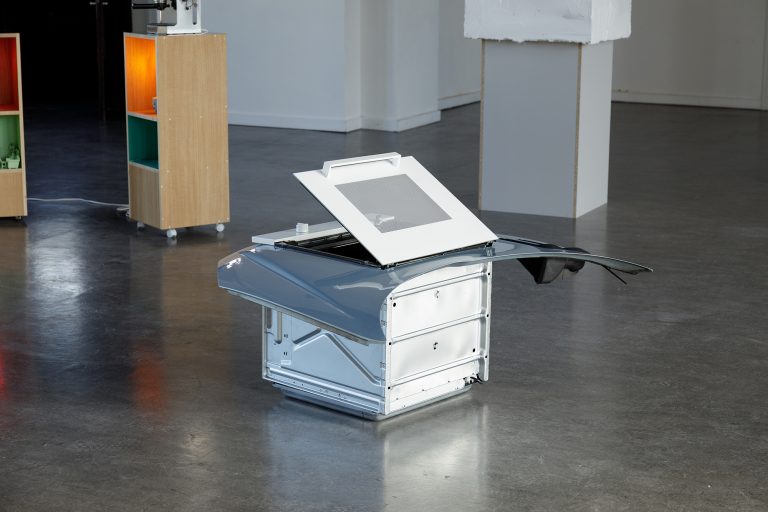
Phung-Tien Phan, Cafè Chardonnay – alles nehmen (installation view), 2020; Kunstverein Harburger Bahnhof. Courtesy: the artist and Drei, Cologne
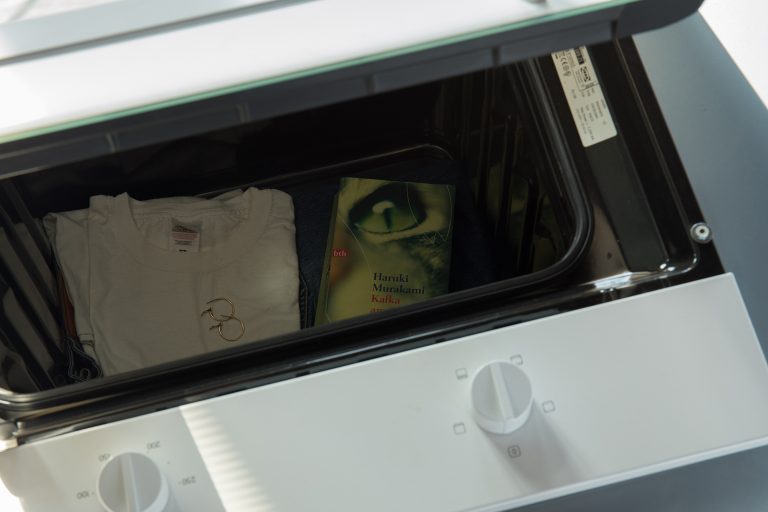
Phung-Tien Phan, Cafè Chardonnay – alles nehmen (installation view), 2020; Kunstverein Harburger Bahnhof. Courtesy: the artist and Drei, Cologne
The paradox Phan pursues in her multimedia works unfolds somewhere between consumer goods, self-stylization, and projected role models. They contain a sober kind of humor that would normally make you laugh—but, on closer inspection, their uncanny realism makes the laughter stick in your throat.
Annette Hans, 2020
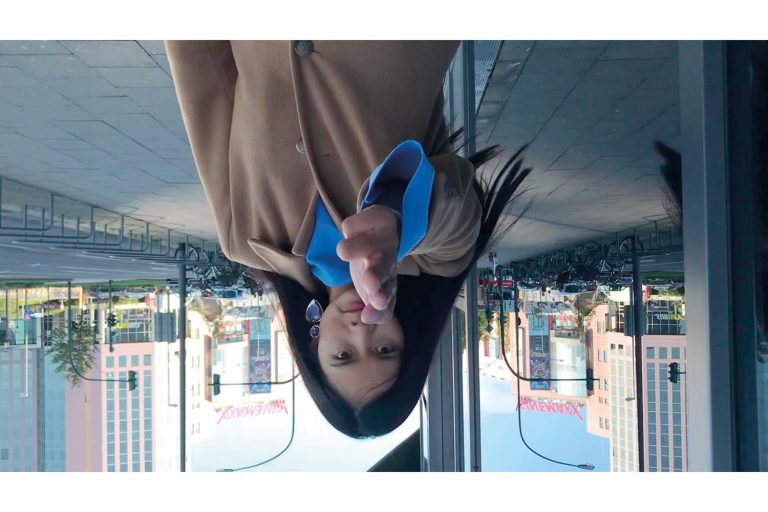
Phung-Tien Phan, Actress & Actors (still), 2019. Courtesy: the artist and Drei, Cologne
The ensemble is flanked by a series of fabrics attached to the wall, on which dark burn marks are visible, obviously caused by an iron. The letters produced in this way reveal T R I P on the left wall and L E T S on the opposite wall.
Beginning in the usual reading direction TRIPLETS (triplets) results. Opposite appears the request LETS TRIP, which in each reading evokes an escapist fantasy. This work, clearly attributed to domestic labor by means of the material, is juxtaposed, in a suspiciously classical manner, with workbenches. Their basis, in turn, are domestic tables, which as a place of encounter form the possible interface of both spheres.
By means of precise interventions, Phan creates, with sarcastic casualness, the distorted image of an existence between work, family and household, as well as the familiar longings to escape this construct.
In terms of the not-too-distant past, Phan seems to be carving out a space somewhere between the kind of slacker self-parody championed by the likes of Martin Kippenberger and the politicization of domestic labor, perhaps most poignantly summarized in Mierle Laderman Ukeles’s Manifesto for Maintenance Art, 1969!—between making your life your work and making your work your art.
Stanton Taylor, MOUSSE Magazine, 2021
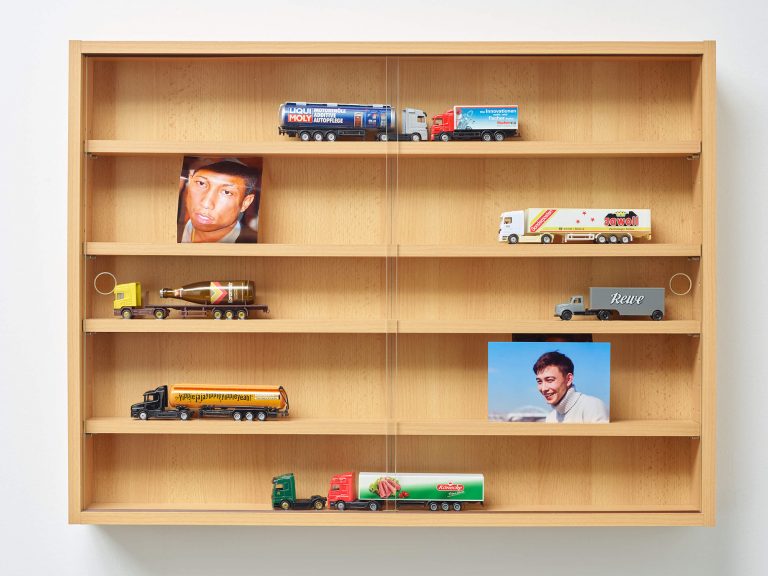
Phung-Tien Phan, Lil Emo, 2019. Courtesy: The artist and Drei, Cologne. Photo: Simon Vogel
